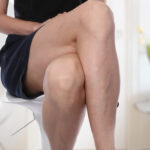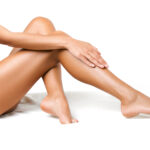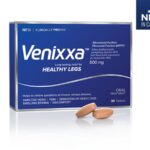EXCESSIVE SWEATING: MEDICAL EXPLAINATION & SOLUTIONS
by Dr. Janna M. Bentley
WHAT IS HYPERHIDROSIS?
This is a common condition affecting almost 3% of the population that often goes undiagnosed and untreated, even though it causes considerable impairment on quality of life. It is characterized by sweating beyond what is necessary to maintain a person’s ideal body temperature. There is no standard definition, but any degree of sweating that interferes with activities of daily living is abnormal. The degree of hyperhidrosis can vary from mild to severe and can affect every aspect of daily life from social interactions to ability to participate in leisure activities and work in certain occupations. It is the often the cause of frustration, chronic embarrassment and low self esteem.
HYPERHIDROSIS IS SEPARATED INTO TWO CATEGORIES:
Localized hyperhidrosis occurs in otherwise healthy people. It affects one or more body areas, most often the armpits, palms, soles and face, and is symmetrical, involving both sides of the body. Sweating is generally triggered by fear and anxiety, but also by other substances like coffee, tea, spices, sweets and cola drinks. It usually starts in childhood or adolescence and peaks in the 3rd and 4th decade.
Generalized hyperhidrosis involves the entire body and is usually part of an underlying medical condition such as infection, malignancy, and hormonal disorder. An extensive medical examination may be necessary to diagnose the cause of this condition.
WHAT IS THE CAUSE OF LOCALIZED HYPERHIDROSIS?
The cause is poorly understood, but is likely due to a complex dysfunction of the autonomic nervous system. This system is responsible for maintaining our body at a steady state, controlling our blood pressure, heart rate, body temperature, as well as other bodily functions such as digestion, sexual response and reaction to stress.
The thermostat that regulates body temperature is located in the hypothalamus of the brain. When the body temperature rises beyond an acceptable level, sweating is activated through the sympathetic nervous system (SNS), one of the components of the autonomic nervous system. A neurotransmitter is released from the nerves of the SNS to the sweat glands, causing the production of sweat. The hypothalamus also responds in this manner to emotion and physical activity.
In hyperhidrosis, the sweat glands are normal in number and size, but these individuals have a higher than normal base line level of sweat production as well as a lowered threshold and exaggerated response to stimuli such as emotional or physical stress.
There is a genetic predisposition to this disorder as 30 – 50 % of hyperhidrosis sufferers have a positive family history.
WHAT TREATMENTS ARE AVAILABLE FOR LOCALIZED HYPERHIDROSIS?
TOPICAL TREATMENT
The first line of treatment no matter what body area is involved is the use of aluminum salts. This is the most common ingredient in over the counter antiperspirants, but is found in concentrations of only 1 – 2 %. Higher concentrations are available by prescription, and 15–20% is generally necessary to treat axillary hyperhidrosis. This treatment is not as effective for the palms or soles, but higher concentrations of 30% may be effective.
It is thought to work by obstructing the duct of the sweat gland and with chronic use causes atrophy of the secretory cells.
BOTULINUM A TOXIN
The injection of this substance was approved in 2001 for the treatment of hyperhidrosis and for many has replaced the need for surgery, especially for those suffering from axillary hyperhidrosis. There have been 2 large randomized controlled studies where significant improvement in axillary sweating was found in 95% of patients at one week, with an average duration of effect of 7 months.
It works by inhibiting release of the neurotransmitter acetylcholine from the sympathetic nerves that innervate the sweat glands. It is not a permanent treatment as new neurotransmitters eventually are formed, and the botulinum injections will need to be repeated.
This is the second line of treatment of axillary hyperhidrosis if topical treatment failed. Botox can be used to treat hyperhidrosis of the hands and feet, but because of all the nerve endings in the hands and feet, it is an extremely painful procedure to do without anaesthesia. Despite this, many people choose to have botox treatments in their hands and feet, either with the aid of ice as anaesthesia or nerve blocks. The response rate for botox treatment of the palms in some studies is over 90% with a duration of 4 – 6 months.
IONTOPHORESIS
This is defined as the introduction of ions into the skin by means of an electrical current. The exact mechanism of action in hyperhidrosis treatment is not clear but it is thought that a charged particle obstructs the sweat duct or the electrical charge disrupts the sweat gland secretion. It is often used as a second line treatment in treatment of hyperhidrosis of the palms and soles if topical treatment has not worked.
The iontophosis unit can be rented or purchased for home use. The hands or feet are placed in shallow basins filled with tap water through which an electric current is passed. The person feels a tingling sensation which is not painful.
While there have been no large, randomized controlled studies done, iontophoresis has been reported to be 80 – 100 % effected in uncontrolled trials. It requires long term therapy, which involves at least 20 minutes per day at least 4 days a week. If it works, normal sweating is achieved generally after 6 – 10 treatments.
SURGICAL TREATMENT
This is the last option reserved if other treatments have failed. Surgical treatment is associated with good results but is associated with increased risk and possible complications compared with the previously discussed methods of treatment.
Endoscopic thoracic sympathectomy is effective for treating axillary, palmar, and facial hyperhidrosis. The main limitation is the high incidence of mild to severe compensatory hyperhidrosis, usually involving the trunk and legs. It seems the more areas are treated, the higher the risk of this complication. There are other risks like damage to other nerves and bleeding into the space between the chest wall and lung.
Other surgical procedures are available to treat axillary hyperhidrosis. These involve removal of the sweat glands by liposuction or curettage.
In summary, hyperhidrosis is a common condition which can have deeply detrimental effects on a person’s quality of life. There are safe and effective treatments available so it is important to seek help from a medical doctor if excessive sweating is affecting the way you live.























